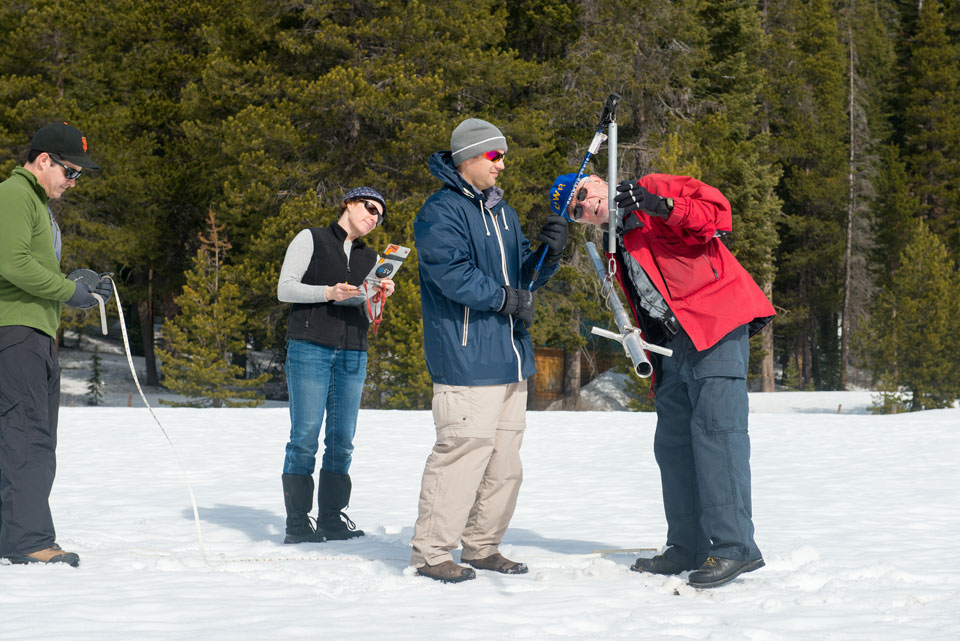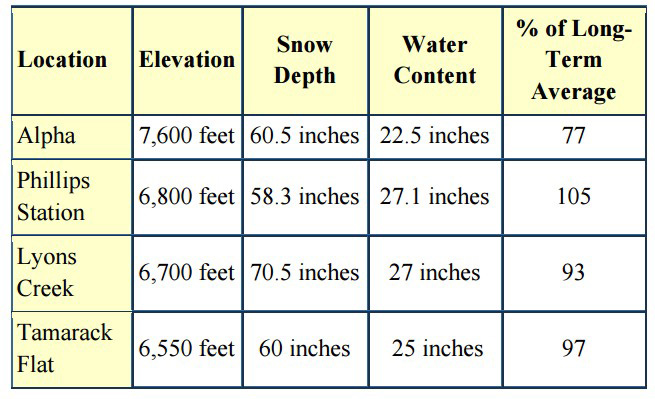
Credit: DWR Photography/Florence Low
March 2, 2016 - SACRAMENTO –The statewide snowpack – source of much of the California’s water supply – is only 83 percent of the March 1 average, the result of moderate precipitation since last October and relatively warm temperatures.
“Mother Nature is not living up to predictions by some that a ‘Godzilla’ El Niño would produce much more precipitation than usual this winter,” said DWR Director Mark Cowin. “We need conservation as much as ever.”
The Department of Water Resources (DWR) conducted its third media-oriented snowpack survey of the season on Tuesday, March 1, 2016, 90 miles east of Sacramento just off Highway 50 in the Sierra Nevada. Phillips Station is one of about 250 snow courses measured manually several times each winter.
Frank Gehrke, chief of the California Cooperative Snow Surveys Program, and his survey team measured snow that was 58.3 inches deep at Phillips with a water content of 27.1 inches. The Phillips readings are the best for early March since 2011, but individual snow courses are not generally representative of the entire mountain snowpack.
The statewide readings suggest this may not be a drought-busting year unless California receives heavy rain this month as it did during the “March Miracles” of 1991 and 1995.
“Right now, we’re obviously better than last year but still way below what would be considered adequate for any reasonable level of recovery at this point,” Gehrke said.
Electronic readings of northern Sierra Nevada snow conditions found 23.1 inches of water content (89 percent of normal for March 1), 21.7 inches in the central region (85 percent of normal) and 17 inches in the southern region (75 percent of normal).
Today’s snow measurements at Phillips were markedly improved compared to March 2015, when the depth was only 6.5 inches and the water content just 1 inch. Dry conditions persisted in March, and Governor Edmund G. Brown Jr. stood on bare ground on April 1 when he mandated a 25-percent reduction in water use throughout California.
Traditionally, half of the state’s annual water falls as rain or snow during December, January and February. Precipitation in December and January measured at weather stations monitored electronically by DWR was 170 percent of the two-month average, but October, November and February rainfall was far below normal. Snowfall since December 1 has mirrored that pattern.
In normal years, the snowpack supplies about 30 percent of California’s water needs as it melts in the spring and early summer. The greater the snowpack water content, the greater the likelihood California’s reservoirs will receive ample runoff as the snowpack melts to meet the state’s water demand in the summer and fall.
Results of today’s manual readings by DWR near Echo Summit are as follows:

Among the eight reservoirs with capacities of 1 million acre-feet (MAF) or more tracked by DWR at the website below, all are currently below average storage for this date, from New Melones (31 percent) to Lake Shasta (83 percent). The only major reservoir with current storage above its historical average on this date is Folsom Lake (111 percent).
Credit: DWR








